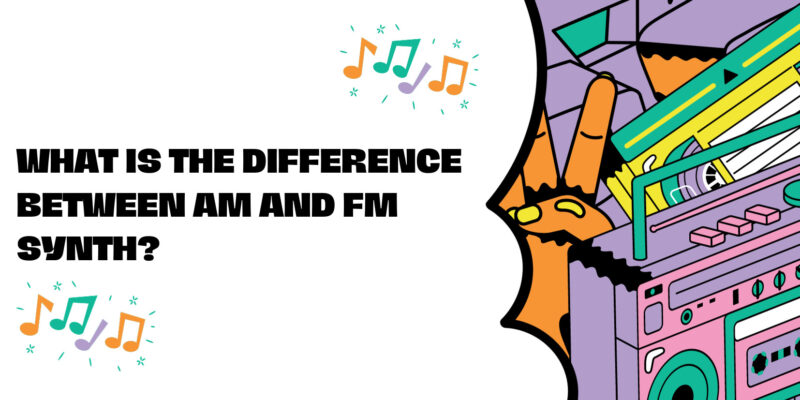In the vast realm of sound synthesis and electronic music, two prominent methods stand out for creating complex and expressive timbres: AM (Amplitude Modulation) and FM (Frequency Modulation) synthesis. While both techniques share similarities in their use of modulation to shape sound, they differ significantly in how they achieve their sonic results. In this article, we will delve into the differences between AM and FM synthesis to shed light on their unique characteristics and applications.
AM Synthesis:
Amplitude Modulation synthesis involves the modulation of an audio signal’s amplitude, or volume, using a modulating signal. Here’s an overview of AM synthesis:
- Modulation of Volume: In AM synthesis, the amplitude (volume) of a carrier waveform is modulated by a secondary signal called the modulator. As the modulator signal varies in amplitude, it causes the carrier signal’s volume to rise and fall accordingly.
- Timbral Changes: AM synthesis is known for producing timbral changes characterized by variations in the loudness of harmonics within the signal. These changes create dynamic and evolving tonal textures.
- Simple Ratio Relationships: AM synthesis often involves simple ratio relationships between the frequencies of the carrier and modulator signals. These ratios influence the complexity and richness of the resulting timbres.
- Classic Applications: AM synthesis has been used in classic electronic instruments, such as the Hammond organ and early electronic keyboards. It is associated with warm and expressive tones.
FM Synthesis:
Frequency Modulation synthesis, on the other hand, involves modulating the frequency of a carrier waveform using a modulator signal. Here’s an overview of FM synthesis:
- Modulation of Frequency: In FM synthesis, the frequency of a carrier waveform is modulated by a modulator signal. As the modulator signal varies in frequency, it causes the carrier signal’s pitch to shift up and down.
- Harmonic Complexity: FM synthesis is renowned for producing harmonic complexity and rich timbres. The interactions between the carrier and modulator frequencies create a cascade of harmonics and subharmonics.
- Nonlinear Behavior: FM synthesis exhibits nonlinear behavior, meaning that small changes in the modulator frequency can result in dramatic shifts in the carrier frequency and timbral characteristics.
- Contemporary Applications: FM synthesis gained popularity through the Yamaha DX series of synthesizers, and it is widely used in electronic music genres like techno, industrial, and ambient due to its ability to create a wide range of metallic, bell-like, and evolving tones.
Key Differences and Applications:
- Modulation Target: The fundamental difference between AM and FM synthesis lies in what is being modulated. AM synthesis modulates amplitude, affecting the loudness of the signal, while FM synthesis modulates frequency, affecting the pitch and harmonic content.
- Timbral Characteristics: AM synthesis produces changes in loudness and harmonic content, resulting in warm and expressive tones. FM synthesis, on the other hand, creates rich and complex timbres characterized by harmonic spectra that evolve dynamically.
- Applications: AM synthesis is often associated with classic, vintage sounds and expressive musical textures. FM synthesis, due to its versatile and complex timbral possibilities, is favored in contemporary electronic music and sound design, especially for creating metallic, percussive, and otherworldly textures.
Conclusion: A World of Sonic Exploration
In the realm of sound synthesis, AM and FM techniques offer distinct paths to sonic creativity. While AM synthesis adds expressiveness and warmth to sound, FM synthesis unleashes a universe of complex and evolving timbres. Musicians and sound designers choose between these methods based on the specific textures and sonic landscapes they wish to explore, making AM and FM synthesis invaluable tools for shaping the sonic future of music.


